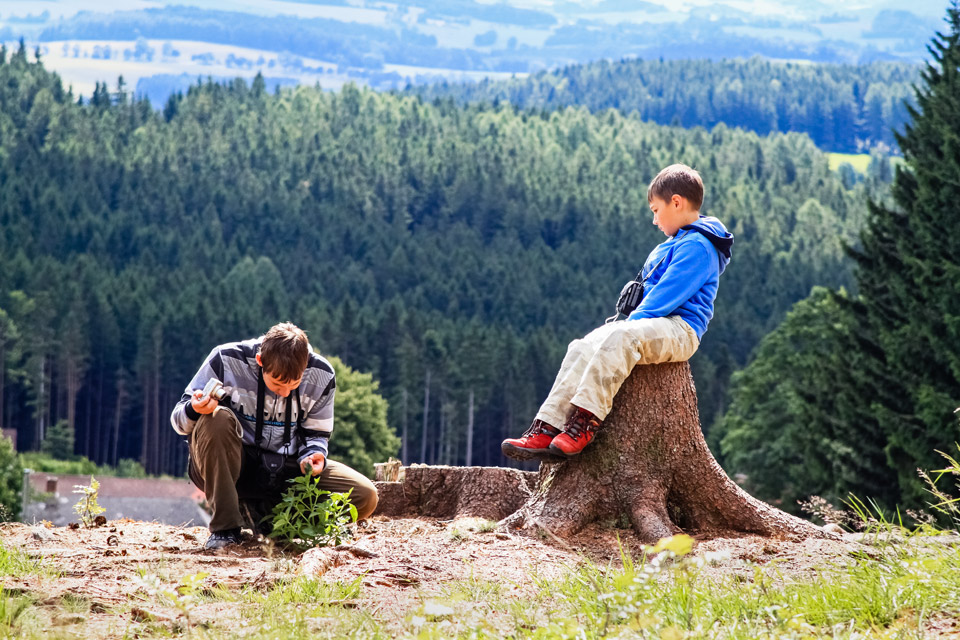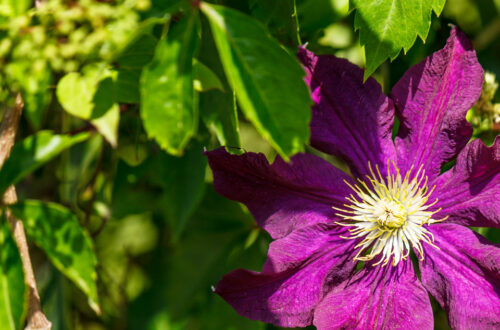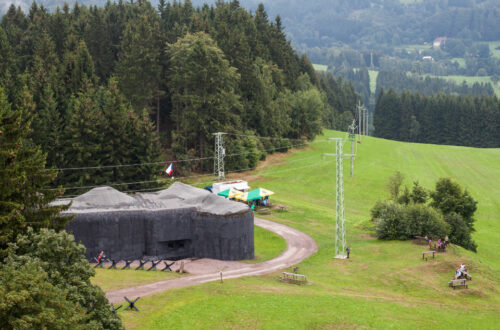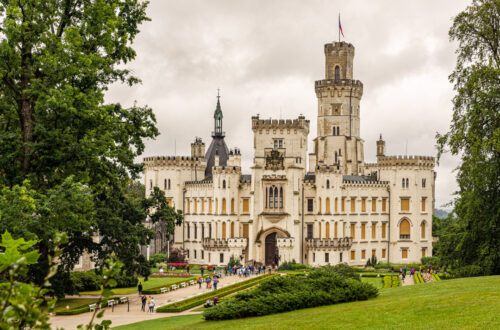Javorník
When we were leaving the camp, we were staying at in Šumava last summer, our clothes as well as boots were cold and wet, and we were looking forward to returning home. We even weren’t quite sure whether to make one last trip on our way back. Then we found a location on a map which was situated along the way home and looked interesting. It was Javorník, both a town and hill with an observation tower, and eventually we decided to stop there. We parked our car in the town and followed a marked trail.
After climbing a part of the hill, we came to a chapel of St. Anthony of Padua. The chapel was built in 1940 and renovated just two years ago. St. Anthony’s name day is celebrated in the catholic calendar on 13th June and I read that every Sunday following this date a pilgrimage is made to the chapel.
While I and my husband were trying to take photos of the chapel, our kids were enjoying the rest and view.


The next stop was at the observation tower. It is interesting that when the tower was finished in 1938, it was 24 metres high. About 30 years later the surrounding forest reached higher than the tower and it lost its function. In 2001 an endowment fund was set up in order to put the tower back into operation. Some money was donated and a mobile operator which showed interest in using the tower commercially invested in the renovation a great deal. It was decided that because of environment protection the tower will get other 19 metres of height instead of cutting down the surrounding trees and finally in 2003 it was reopened.
When you climb all the stairs up, you’ll see something like this:
We liked it so much there and didn’t want to go back to our car yet, so we followed the marked trail for a few more kilometres aiming at a “royal stone”. On our way we met a low wall made of stones which was lining the path we were walking along. It is said that it either divided estates sometime in the past or was a part of a Celtic settlement. I loved the wall and enjoyed its presence there.


The Royal stone is a hill and near by its top local farmers carved an altar into a rock. The altar is dated by the year 1899, inscriptions are made in German.
If we continued further, we would come to our starting spot from a different direction, but it seemed too long, so we went back the same way. But it didn’t matter at all as the way was so interesting and enchanting.








